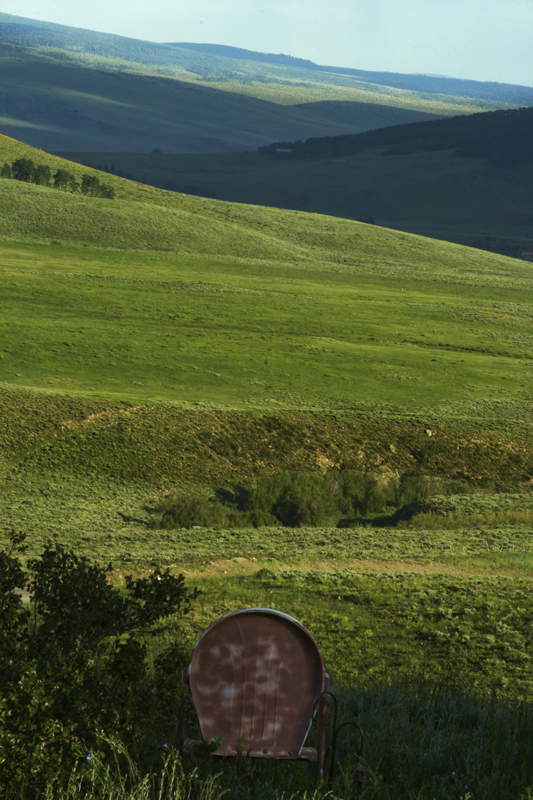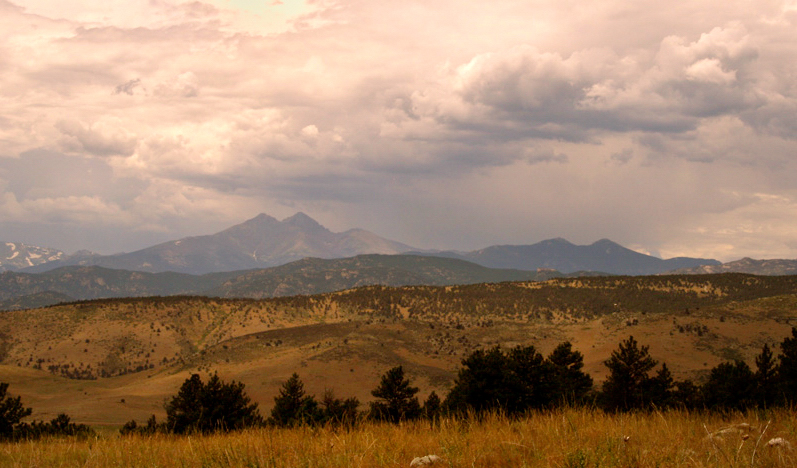Thank you to everyone that participated in the "Atmospheric Perspective" assignment. The guidelines for the assignment were: "Atmospheric perspective" deals with how the appearance of an object changes when we view it from a distance. Moisture, dust and pollution in the air interfere with light transmission and result in objects in the distance having less contrast, less saturated colors, and “hazy” or blurry detail. We subconsciously use these visual cues to perceive these “hazy” objects as being far off in the distance. Your image submissions for this assignment should use these atmospheric effects to establish a sense of distance and depth in the scene. This will be most effective when used in conjunction with the techniques already discussed in the "linear perspective" assignment."
I liked Ellen's (jecc) "Clear Day in Crested Butte" image. Notice how the atmoshperic haze reduces contrast and detail and shifts the color towards blue on the distant hills. Our minds perceive these cues and subconciously understand that this effect is due to the hills being far off in the distance. This has the desired effect of adding "depth" to the image.

Clear Day in Crested Butte, Colorado
I would like to have seen this image with the chair placed a little differently in the frame. I didn't see the original scene; however I get the sense that this image might have been a little stronger with the chair a little higher and a little more to the left in the frame. I also notice from the EXIF data that this image was shot at an aperture of f32. You should be very carefull about shooting at apertures smaller than f16, since diffraction will definitely reduce image sharpness at smaller apertures. If you need more depth of field, use a tripod and try "focus stacking." (Focus stacking would have been fairly easy to do with this image. Just take one shot for the "near" objects and one for the "middle" objects and then align the layers in Photoshop and blend. (See the focus stacking tutorial for the details.) I would have avoided trying to make the distant hills sharp, since this counteracts the "atmospheric perspective" depth cue.)
I really liked the clouds in Erik's "Longs Peak" image, and thought the whole scene cried out for more "dramatic" lighting. I played a bit in post processing and changed the image from this:

Longs Peak
To this:

Longs Peak (modified)
This version might be a little "over the top," however it does give you an idea of how it is possible to enhance an image with "flat" light and make it a bit more dramatic. (I could have done better with the raw file.) Erik's original image was another good example of atmospheric perspective. Notice how the series of foothills and mountain ranges show progressively less contrast and detail as they recede in the distance.
Ellen's "Clear Day in Crested Butte" won the vote for "
People's Choice," and is awarded
Editor's Choice for Artistic Merit as well. Thank you to everyone that participated in the "Atmospheric Perspective" assignment. Hopefully the assignment helped you to develop the skill to visualize and employ the techniques associated with atmospheric perspective to convey a sense of depth in your images.